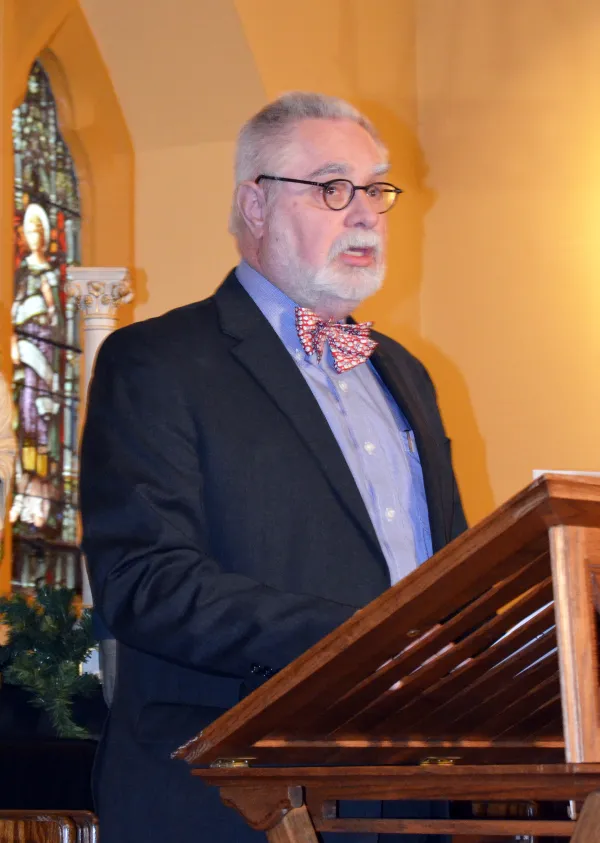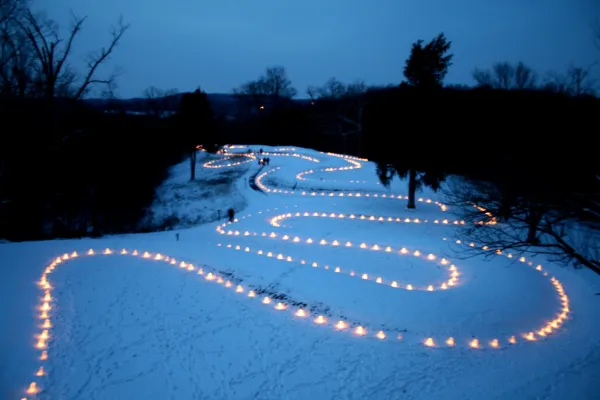Bob Bites Back: Governor Scrooge asks “Are there no workhouses for Ohio’s poor?”
Image

During this holiday season nearly 134,000 Ohioans face the prospect of ringing in the new year hungry. Governor John Kasich has decided, despite Ohio’s stagnant job growth and high unemployment, that work requirements will be mandated in 72 counties for childless adults aged 18-50 in order to qualify for food assistance.
Ohio is still down 221,000 jobs from where it was in November 2007. Where these 134,000 people will work is a puzzling proposition. What is known is that they will no longer qualify for the Supplemental Nutrition Assistance Program (SNAP) – what used to be called food stamps.
Kasich could have accepted a federal waiver that would have extended the federal food aid for all the counties in Ohio for at least one year without the work requirements.
Nuclear News: NRC gets a resounding vote of “NO CONFIDENCE” in Perrysburg
Image

On December 2, 2013, the U.S. Nuclear Regulatory Commission (NRC) held a public meeting on “Waste Confidence” in Perrysburg, OH.
The NRC has “confidence” that the high-level radioactive nuclear waste problem will be solved sometime in the future! In 1984, in an Orwellian act, they ruled that they can continue to hand out new licenses for nuclear power reactors and give 20-year license extensions to aging, brittle, accident prone nuclear reactors – without considering public concerns about the safety, storage and disposal of thousands of tons of radioactive waste. The NRC also maintained that high-level radioactive waste is a “generic” issue. So issues specific to particular sites – such as the amount of waste accumulating in overcrowded fuel pools or in aged, deteriorated casks, or in areas prone to flood or earthquake—cannot be raised.
A year ago, after legal action by a group of organizations, including the Sierra Club, the U.S. Court of Appeals in Washington, DC overturned the NRC waste confidence ruling. This forced the NRC to halt all licensing of reactors.
And so the fracking cover up begins
Image

A headline in the Saturday, November 30 Columbus Dispatch screamed: “Family’s well not tainted by driller.” The lead asserts that, “Natural gas that caught fire after it bubbled from a faucet in a Portage County house did not come from a nearby shale well, state officials have concluded.” The question is, can we trust these state officials?
The investigation conducted by the Ohio Department of Natural Resources (ODNR) needs to be closely examined. The ODNR is at best a “captured agency” which has been accused repeatedly of promoting the oil and gas industry and specifically fracking, the practice of horizontal drilling.
The freepress.org reported earlier this year that formal complaints were filed against ODNR employees for falsifying “production records on wells.” Reports were also made to the FBI that the ODNR was covering up 1200 gas wells that were on record without tax ID numbers in southern Ohio.
Ohio Right to Life's Infant Adoption Reform Bill: Threatens birthparent rights, doles out tax credits
Image

Recently Ohio Right to Life brought a bill to the Ohio General Assembly that would change substantially the way adoptions are done in the state.
HB 307, known as the Infant Adoption Reform Bill, shortens the time that an adoption in Ohio can be challenged post-finalization, decreases the time a man is eligible to file with the Putative Father Registry, permits individuals and couples to advertise for a child to adopt and increases the Ohio adoption tax credit from $1500 to $10,000.
ORTL president Mike Gonidakis claims that these measures will reduce abortion rates and encourage adoption by relieving potential adoptive parents (popularly known in adoption reform as “paps”) from the stress and expense of a long drawn-out, often expensive, adoption process.
There is nothing in the bill, however, to indicate how making the adoption process easier and cheaper will increase newborn adoption rates since newborns are traditionally in short supply. Nor does it address how to increase the adoption of hundreds of available children warehoused in the state's over-burdened foster care system.
Mansfield Council votes in support of fracking waste ban in Ohio
City officials and citizens of Mansfield Ohio continue to move forward in protecting communities against the inundation of hydraulic fracturing waste disposal. In a unanimous vote, Mansfield City Council passed resolution 13-343 which strongly supports the passage of Ohio House Bill 148. HB 148 proposes prohibiting the disposal of brine by deep well injection and land application in the state of Ohio.
Ohio is targeted as a toxic dumping ground by the oil and gas industry and Ohio residents are seeing an increasing amount of waste flowing into their communities. As local municipalities fight to prevent the influx of toxic waste, the Ohio Department of Natural Resources continues to permit Class II injection wells and welcome millions of gallons of hazardous waste from inside and outside the state. In 2012 almost six hundred million gallons of toxic fracking waste was dumped on Ohio communities via injection and almost sixty percent of that came from out of state.
Ohio is targeted as a toxic dumping ground by the oil and gas industry and Ohio residents are seeing an increasing amount of waste flowing into their communities. As local municipalities fight to prevent the influx of toxic waste, the Ohio Department of Natural Resources continues to permit Class II injection wells and welcome millions of gallons of hazardous waste from inside and outside the state. In 2012 almost six hundred million gallons of toxic fracking waste was dumped on Ohio communities via injection and almost sixty percent of that came from out of state.
A Capital without rail
Image

History has been made in our lifetime. When President Obama came to office in 2009, he had a progressive agenda that included implementing a national high speed rail plan. Many of his platforms became unsuccessful bargaining chips and the high speed rail plan was hardly popular on both sides of the isle. Three Republican governors effectively halted the plan by rescinding astronomical amounts of money that would have improved high speed travel in their respective states. People from Wisconsin, Florida and, of course, Ohio have lost opportunities to move around their states without disrupting the climate on the road or frequently paying more for airfare. Ohio is vying for high-speed rail yet again though.
Columbus is situated in a central position relative to cities in Ohio and across state lines. The third largest city in the country, Chicago, is only 350 miles away. While in the air, these cities seem worlds away, and their communities become completely disconnected. And although the road can be exhilarating- and other times exhausting- an identified high speed rail line could get passengers to their destination in only three and a half hours.
Stalking the Serpent Mound…
Image

This past summer two busloads of the Eastern Shawnee Tribe of Oklahoma hit the road to pay a visit to the Ohio Historical Society at its headquarters adjacent to the state fairgrounds. The Oklahoma Shawnee were not on vacation mind you, but on a mission: to give the Ohio Historical Society (OHS) a history lesson. And as one OHS employee recalled in a diplomatic tone, “We’ve learned from our past.”
The Oklahoma Shawnee had gotten wind that the Serpent Mound in southern Ohio – the world’s largest effigy mound and recently named by National Geographic as one of “Great Wonders of the Ancient World” – was becoming a popular destination for New Agers.
Indeed, over the past three years at certain New Age-themed events the mound was surrounded by hundreds of admirers as their reverence for the mound was clearly on display.
Ohio communities unite to blockade a "Toxic Trespasser"
NILES, Ohio — Two Youngstown community members were arrested today at a nonviolent protest of an injection well, which was attended by about 50 protesters from around Ohio and Pennsylvania. The two protesters who were arrested stood in front of the well gate and blocked trucks from entering, holding a sign that read “Fracking Hurts Communities.” Meanwhile, the rest of the protesters participated in a spiritual ceremony led by Reverend Monica Beasley-Martin. The well where the protests took place is the first in the Niles area; it is less than a mile from the downtown areas.
How the City of Columbus could save us from radioactive fracking waste -- but will they?
The website says it all: RadioactiveWasteAlert.org.
The billboard with a young woman guzzling liquid with a radioactive warning on it under the phrase: “Don’t Frack My Water, Protect Columbus” set the stage for one of the most important public forums in the city’s history.
If we had to summarize the major themes that emerged from the Tuesday, November 12 Radioactive Frack Waste Forum, the first is this: the public has a right to know that much of the process allowing radioactive waste into the central Ohio watershed near Alum Creek is the result of hidden, behind-the-scenes maneuvering by Ohio legislators and Governor John Kasich.
Second: the frack waste is undisputedly radioactive and carcinogenic. Radium 226 found at 3000% over the allowable limit by the U.S. Environmental Protection Agency (EPA) has a long-established link to many forms of cancer, including breast and bone cancer.
Third: All landfills leak. If you put radioactivity into them, it will come out.
The billboard with a young woman guzzling liquid with a radioactive warning on it under the phrase: “Don’t Frack My Water, Protect Columbus” set the stage for one of the most important public forums in the city’s history.
If we had to summarize the major themes that emerged from the Tuesday, November 12 Radioactive Frack Waste Forum, the first is this: the public has a right to know that much of the process allowing radioactive waste into the central Ohio watershed near Alum Creek is the result of hidden, behind-the-scenes maneuvering by Ohio legislators and Governor John Kasich.
Second: the frack waste is undisputedly radioactive and carcinogenic. Radium 226 found at 3000% over the allowable limit by the U.S. Environmental Protection Agency (EPA) has a long-established link to many forms of cancer, including breast and bone cancer.
Third: All landfills leak. If you put radioactivity into them, it will come out.
The John Kasich Re-Election Protection Act
With a stroke of his pen on November 6, 2013, Ohio Governor John Kasich demonstrated his utter contempt for democracy. Fearing that Ohio Libertarian Party nominee Charlie Earlwho has strong Tea Party support would cut into his conservative base, Kasich outlawed all third parties in Ohio for the 2014 election.
The offending law is Senate Bill 193, which passed last week amidst controversy and turmoil at the Statehouse. It has been dubbed the “John Kasich Re-election Protection Act” for obvious reasons. The ever-arrogant Ohio Senator Bill Seiz (R-Cincinnati) introduced the draconian law the same day the Libertarians publicly announced Earl’s nomination.
Kasich has always been a bit contemptuous of competitive elections. Other than his first campaign, most of his electoral victories were landslides aided by gerrymandered districts and an incredibly safe noncompetitive seat in the 1990’s. When Kasich ran for president in 2000, he often polled 0% of the vote in the early caucus and primary states.
The offending law is Senate Bill 193, which passed last week amidst controversy and turmoil at the Statehouse. It has been dubbed the “John Kasich Re-election Protection Act” for obvious reasons. The ever-arrogant Ohio Senator Bill Seiz (R-Cincinnati) introduced the draconian law the same day the Libertarians publicly announced Earl’s nomination.
Kasich has always been a bit contemptuous of competitive elections. Other than his first campaign, most of his electoral victories were landslides aided by gerrymandered districts and an incredibly safe noncompetitive seat in the 1990’s. When Kasich ran for president in 2000, he often polled 0% of the vote in the early caucus and primary states.
